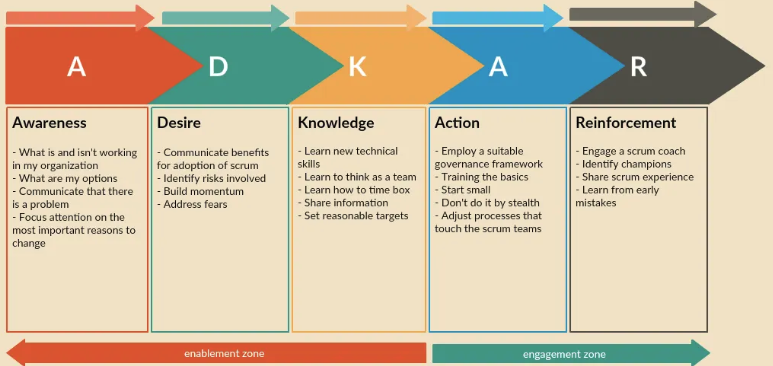TL;DR
- Leaders must establish a clear and compelling vision to motivate and guide employees.
- Fostering a culture that embraces change and innovation is essential, which includes encouraging open communication and rewarding supportive behaviors.
- Implementing agile methodologies like Scrum or Kanban helps organizations quickly adapt and promote continuous learning.
- Empowering employees by involving them in decision-making and providing necessary resources enhances their commitment to transformation.
- Leaders should model desired behaviors, be transparent, and actively seek feedback to inspire trust and credibility.
In today’s fast-paced and ever-changing business landscape, organizational transformation has become a necessity for companies to remain competitive and thrive. Whether it’s adapting to new technologies, responding to market shifts, or addressing internal inefficiencies, leaders play a critical role in driving and successfully navigating organizational transformation. Here we explore the key strategies and practices that leaders can employ to facilitate effective transformation within their organizations.

Visionary Leadership
Organizational transformation begins with a clear and compelling vision. Leaders must articulate a compelling purpose and a shared future that inspires and aligns the entire organization. By establishing a clear vision, leaders provide a guiding light that energizes and motivates employees, creating a sense of purpose and direction. Visionary leaders communicate the need for change, outlining the benefits and opportunities that lie ahead. They engage employees at all levels, fostering a culture of innovation and encouraging them to embrace the transformation journey. By embodying the vision themselves, leaders demonstrate commitment and inspire others to adopt new ways of thinking and working.
Building a Change-Ready Culture
To drive organizational transformation, leaders must create a culture that embraces change and innovation. They need to foster an environment where experimentation is encouraged, failure is seen as a learning opportunity, and continuous improvement is the norm. Leaders can establish a change-ready culture by fostering open communication channels, encouraging feedback and collaboration, and empowering employees to take ownership of their work and contribute to the transformation process. They should also recognize and reward behaviors that align with the desired cultural values, reinforcing the importance of embracing change.
Developing Agile Capabilities
In today’s rapidly evolving business environment, agility is crucial for successful organizational transformation. Leaders must develop agile capabilities within their organizations, enabling them to quickly adapt to changing circumstances and seize new opportunities. This involves implementing agile methodologies, such as Scrum or Kanban, to promote cross-functional collaboration, iterative development, and rapid decision-making. Leaders should empower teams to experiment, fail fast, and learn from mistakes, fostering a culture of continuous learning and adaptation.
Empowering and Engaging Employees
Empowering and engaging employees is essential for driving organizational transformation. Leaders should provide employees with the necessary resources, tools, and authority to make decisions and contribute meaningfully to the transformation efforts. By involving employees in the decision-making process, leaders foster a sense of ownership and commitment to the transformation goals. This can be achieved through regular communication, town hall meetings, and feedback mechanisms. Leaders should also provide training and development opportunities to enhance employees’ skills and capabilities, ensuring they have the necessary knowledge to navigate the transformation successfully.
Leading by Example
Leaders must lead by example and embody the behaviors and values they expect from others. They should be visible, accessible, and transparent in their communication, demonstrating their commitment to the transformation journey. By consistently exhibiting the desired behaviors, leaders inspire trust and credibility among their teams. They should actively seek feedback and input from employees, acknowledging and addressing concerns and obstacles. When leaders walk the talk, it reinforces the belief that the transformation is not just a mandate but a shared endeavor.
Conclusion
Organizational transformation is a complex and challenging process, but with effective leadership, it can be successfully achieved. Leaders play a crucial role in driving and sustaining transformation by providing a clear vision, fostering a change-ready culture, developing agile capabilities, empowering employees, and leading by example. By embracing these strategies, leaders can inspire their teams, navigate uncertainty, and drive their organizations towards a more innovative and adaptive future. Through their actions and commitment, leaders can create a transformative environment that enables long-term success and growth.


